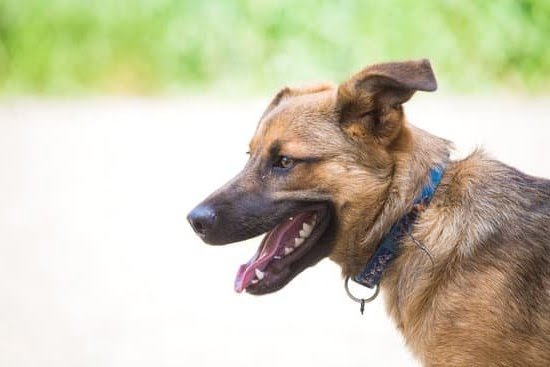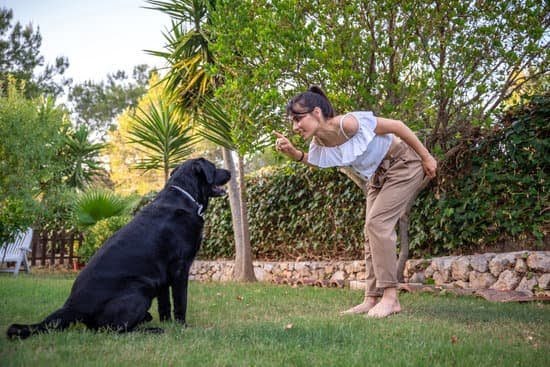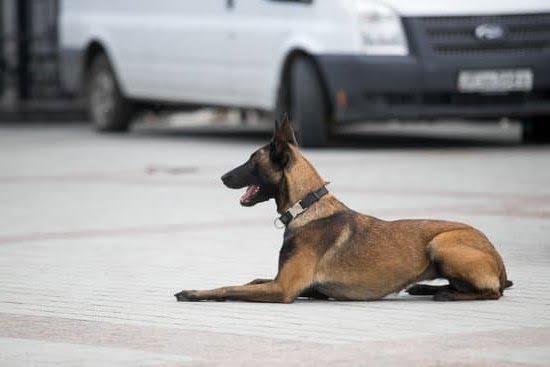How do you potty train a 1 year old dog? Potty training a dog at any age can be challenging, but when it comes to a 1 year old dog, there are unique obstacles and considerations to keep in mind. From establishing a routine to addressing accidents, there are specific strategies that can help make the potty training process smoother and more effective.
Potty training a 1 year old dog is not always an easy task. It requires patience, consistency, and an understanding of your dog’s behavior and habits. In this article, we will explore the challenges of potty training a 1 year old dog and provide useful tips and techniques to help you successfully train your furry friend.
When it comes to potty training a 1 year old dog, every dog is different and may require individualized approaches. By assessing the current potty training situation, establishing a routine, using positive reinforcement techniques, and considering crate training, you can work towards effectively potty training your 1 year old dog. Understanding the challenges ahead and having the right tools and knowledge will be essential in this journey of helping your canine companion develop good bathroom habits.
Assessing the Current Potty Training Situation
When potty training a 1 year old dog, it’s crucial to assess the current situation to determine if your dog is showing any progress or consistent behavior. This can help you understand what methods are working and where adjustments may need to be made in your training approach.
To assess your dog’s current potty training situation, consider the following factors:
- Frequency of accidents: Take note of how often your dog has accidents in the house. If accidents are occurring frequently, it may indicate that your dog is struggling with the concept of potty training.
- Signs of understanding: Observe if your dog is showing any signs of understanding where they should go potty. This can include sniffing around, circling, or heading towards the door when they need to go outside.
- Consistency in behavior: Pay attention to whether your dog is consistently going potty in the designated area outside or if they are still having accidents indoors.
By carefully assessing these factors, you can gain insight into how well your 1 year old dog is grasping the concept of potty training and make informed decisions on how to proceed with the training process.
In addition, it’s important to keep track of your dog’s progress by maintaining a daily log of their potty habits. This can help you identify patterns and pinpoint areas for improvement in their training regimen. Remember that every dog learns at their own pace, so patience and persistence are key during this phase of training.
Establishing a Routine
To establish a routine, it’s important to take your dog outside first thing in the morning, after meals, before bedtime, and at regular intervals throughout the day. By doing this consistently, you are setting clear expectations for your dog and helping them understand when it’s appropriate to eliminate outdoors. Additionally, be sure to give your dog plenty of opportunities for outdoor bathroom breaks, especially during the initial stages of potty training.
Consistency also extends to how you communicate with your dog during the potty training process. Use the same verbal cues each time you take your dog outside, such as “go potty” or “do your business.” Over time, they will associate these cues with the act of eliminating outdoors. Consistency in both timing and communication is key in helping your 1 year old dog learn where and when they should go to the bathroom.
In addition to establishing a consistent schedule for bathroom breaks, it’s essential to monitor your dog’s behavior indoors. Look for signs that they may need to go outside, such as sniffing around or circling in a specific area. By recognizing these cues and promptly taking your dog out, you can reinforce the routine and help prevent accidents from occurring indoors.
Positive Reinforcement Techniques
When it comes to potty training a 1 year old dog, positive reinforcement techniques can be incredibly effective in encouraging desired behavior. Dogs respond well to praise and rewards, so implementing these techniques can make the potty training process smoother and more successful.
Here are some positive reinforcement techniques that you can use to encourage your 1 year old dog to potty train effectively:
- Use treats as rewards when your dog eliminates in the designated potty area. This will associate going potty in the right place with something positive and enjoyable for your pet.
- Shower your dog with praise and affection every time they successfully go potty outside. Positive affirmations from their owner can go a long way in reinforcing good behavior.
- Consider using clicker training to mark the exact moment when your dog eliminates in the desired spot. This will help them understand what they are being rewarded for.
By consistently employing these positive reinforcement techniques, you can effectively communicate to your 1 year old dog where they should go potty, making the training process more efficient and successful.
Remember, every dog is different, so it’s essential to find out what motivates your furry friend and tailor your reward system accordingly. With patience and persistence, you can effectively teach your 1 year old dog where to go potty through positive reinforcement techniques.
Utilizing Crate Training
Choosing the Right Crate
When it comes to crate training for potty training, it’s essential to choose the right crate for your dog. The crate should be large enough for your dog to stand up, turn around, and lie down comfortably, but not too big that they can designate a corner as their bathroom area. It’s also important to make the crate a comfortable and inviting space for your dog so that they feel safe and secure while inside.
Utilizing the Crate for Potty Training
Crate training can be an effective tool for potty training because dogs naturally avoid eliminating waste in their living space. When used correctly, a crate can help you establish a routine for potty breaks and prevent accidents in the house.
You can start by consistently taking your dog outside to relieve themselves after they wake up, after meals, and before bedtime. When you are unable to supervise your dog indoors, such as when you’re at work or sleeping at night, confining them in the crate can help prevent accidents and reinforce good potty habits.
Gradually Phasing Out the Crate
As your dog becomes more consistent with their potty habits and shows fewer accidents, you can gradually start giving them more freedom outside of the crate. This should be done slowly to ensure that your dog doesn’t regress in their potty training progress. You can begin by giving them short periods of unsupervised time in a confined area of the house and gradually increase it as they show reliability with their potty habits.
Utilizing crate training is just one aspect of potty training a 1-year-old dog; however, when used in conjunction with establishing a routine and positive reinforcement techniques, it can be an effective tool in helping your dog learn appropriate bathroom behavior.
Addressing Accidents
Understanding Accidents
Accidents are an inevitable part of potty training, especially when dealing with a 1 year old dog. It’s important to understand that accidents will happen and not to get frustrated or discouraged. Dogs may have accidents due to various reasons such as illness, changes in routine, or even just confusion about where they should go.
Proper Handling of Accidents
When accidents occur, it’s crucial to address them properly. First and foremost, it’s important not to scold or punish your dog for having an accident. This can lead to fear and anxiety, making the potty training process even more challenging. Instead, simply clean up the mess without drawing attention to it and continue with the training process.
Correcting Accidents
To prevent future accidents, it’s essential to correct any underlying issues that may have led to the accident. This could include taking your dog out more frequently, supervising them closely indoors, or reassessing their crate training schedule. By addressing these factors, you can help minimize the occurrence of accidents and reinforce positive potty training behavior.
By understanding how to properly handle and correct accidents during the potty training process, you can maintain a positive and effective approach towards teaching your 1 year old dog where they should do their business.
Patience and Persistence
Potty training a 1 year old dog can be a challenging and time-consuming process, but it is essential for the well-being and cleanliness of your home. It’s important to understand that every dog is different, and some may pick up potty training faster than others. Patience and persistence are key in successfully potty training your furry friend.
One of the first things to remember when potty training a 1 year old dog is to set realistic expectations. Just like human toddlers, dogs will have accidents and setbacks along the way. It’s crucial to remain patient and not get discouraged during the process. Consistency is also vital in reinforcing good potty behavior in your dog. This means taking them out at the same times every day and providing positive reinforcement when they go potty outside.
In addition to patience, persistence is also necessary when potty training a 1 year old dog. It’s essential to stick to the routine you have established and continue providing positive reinforcement consistently. With persistence and dedication, your dog will eventually understand what is expected of them in terms of potty behavior.
| Aspect | Description |
|---|---|
| Expectations | Setting realistic expectations for accidents and setbacks |
| Consistency | Consistently maintaining a routine for taking the dog out |
| Persistence | Dedication to sticking with the training process |
Seeking Professional Help
In conclusion, potty training a 1 year old dog can be a challenging but ultimately rewarding experience. It is important to remember that every dog is different, and what works for one may not work for another. Understanding the challenges and being patient and persistent in the process is key. Consistency in routines, positive reinforcement techniques, and crate training can all be effective tools in successfully potty training a 1 year old dog.
Addressing accidents with patience and proper correction is also crucial in the training process. It’s important not to get discouraged by setbacks and to continue with the training routine.
However, if despite your best efforts, you find that your dog is not making progress or if you are struggling with the process, it may be time to consider seeking professional help. A dog trainer can provide expert guidance tailored to your specific situation, offering valuable insights and strategies to help overcome any obstacles you may be facing.
Ultimately, potty training a 1 year old dog requires dedication, time, and effort. With the right approach and mindset, along with potentially seeking professional help when needed, it is possible to successfully potty train your furry companion and ensure a happy and harmonious living environment for both you and your pet.
Frequently Asked Questions
Is It Hard to Potty Train a 1 Year Old Dog?
Potty training a 1-year-old dog can be challenging, but it is definitely possible with consistency and patience. Since they are still young, they can learn new habits with proper training techniques.
How Do I Teach My 1 Year Old Dog Not to Pee in the House?
Teaching a 1-year-old dog not to pee in the house requires a combination of methods such as crate training, setting a regular potty schedule, positive reinforcement, and closely supervising them indoors. This will help them understand where they should go to relieve themselves.
Can a 1 Year Old Be Fully Potty Trained?
A 1-year-old dog can absolutely be fully potty trained with the right approach. It’s important to be consistent and provide positive reinforcement when they exhibit good behavior. Through patience and dedication, most dogs can learn to be fully trained by this age.

Welcome to the blog! I am a professional dog trainer and have been working with dogs for many years. In this blog, I will be discussing various topics related to dog training, including tips, tricks, and advice. I hope you find this information helpful and informative. Thanks for reading!





